When water becomes scarce, many gardeners worry their landscapes will dry up into a patchy, colorless yard. But a drought-tolerant garden doesn’t have to look bare, desert-like, or dull. With the right design choices, plant selection, and soil care, you can create a thriving, lush-looking garden that uses minimal water while still bursting with life and color.
Designing such a garden is all about strategy: understanding how plants adapt to low water, layering textures, and using creative hardscaping elements to enhance beauty. Here’s a step-by-step guide to creating a water-wise garden that looks anything but thirsty.
Step 1: Start with Smart Planning and Layout
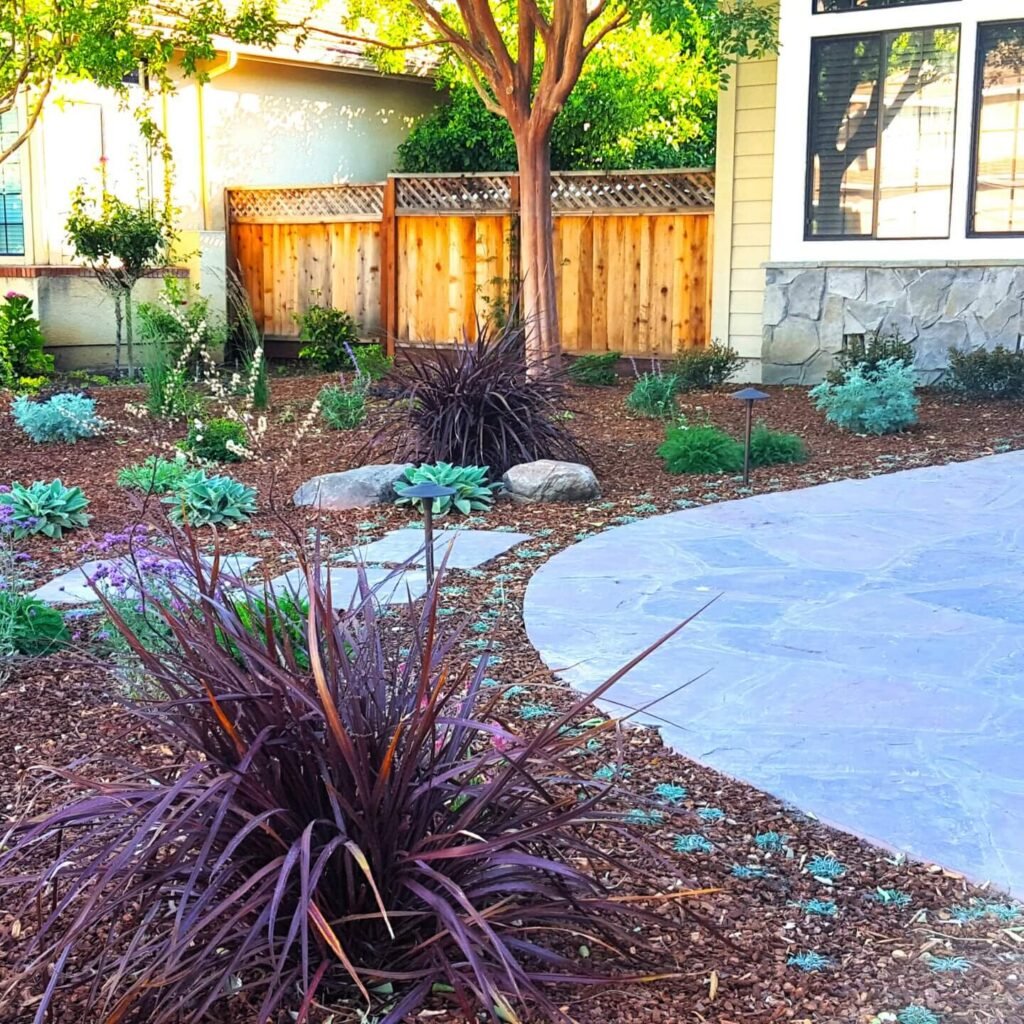
The foundation of any drought-tolerant garden is thoughtful design. How you arrange plants and hardscape features directly affects water use.
- Group plants by water needs: Place high-water plants (like edibles or ornamentals) together so they can be watered efficiently. Keep drought-hardy plants in separate zones.
- Use microclimates: Observe areas of sun, shade, and wind. Plant tougher species in hot, dry spots, and more sensitive plants in shadier, cooler zones.
- Design with curves and layers: Beds with gentle curves and staggered planting heights not only look lush but also slow water runoff and improve absorption.
- Limit thirsty lawn areas: Replace sections of grass with native perennials, gravel pathways, or groundcovers that need far less water.
Pro tip: Create a focal point—like a flowering shrub, a sculptural tree, or a birdbath—that draws the eye and adds richness without requiring heavy watering.
Step 2: Build Healthy, Water-Retentive Soil
Soil is the unsung hero of a lush, drought-tolerant garden. Even drought-hardy plants suffer in poor, compacted soil.
- Add organic matter: Compost, leaf mold, and aged manure improve soil texture and increase its ability to hold water.
- Mulch generously: A 2–4 inch layer of organic mulch (wood chips, shredded bark, straw) shields soil from evaporation, suppresses weeds, and keeps roots cool.
- Reduce tilling: Disturbing soil too often breaks down its structure, leading to water loss. Opt for minimal digging once the soil is prepared.
- Check drainage: While moisture retention is key, soil shouldn’t stay waterlogged. Choose drought-tolerant plants suited to your soil type (clay, loam, or sandy).
Step 3: Choose Plants That Thrive with Less Water
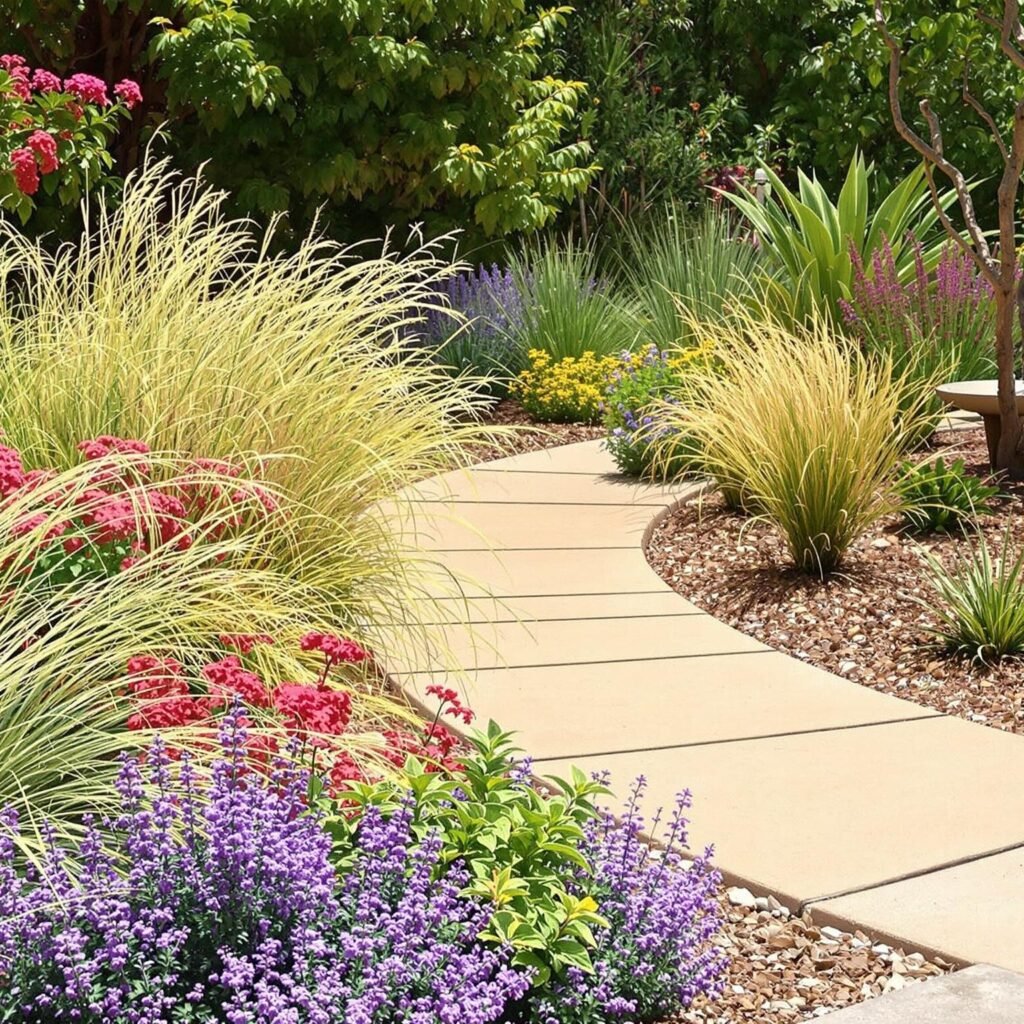
A lush drought-tolerant garden starts with the right plant palette. Contrary to popular belief, drought-tolerant doesn’t mean cacti only—you can achieve color, fragrance, and fullness with a wide range of plants.
- Native plants: They’re adapted to local rainfall and thrive with minimal watering once established.
- Mediterranean plants: Lavender, rosemary, sage, and thyme add beauty, fragrance, and resilience.
- Ornamental grasses: Fountain grass, blue fescue, and feather reed grass bring movement and texture.
- Flowering perennials: Coneflowers, yarrow, Russian sage, and blanket flowers are colorful, hardy, and low-maintenance.
- Shrubs and trees: Butterfly bush, smoke bush, and drought-hardy trees like oak or redbud anchor your garden with structure and shade.
- Groundcovers: Creeping thyme, sedum, or ice plant cover soil beautifully while conserving water.
Pro tip: Mix evergreen shrubs with flowering perennials to maintain a lush look year-round, even in dry spells.
Step 4: Design for Visual Lushness
The trick to making a drought-tolerant garden look lush is layering textures, colors, and heights.
- Mix foliage colors: Combine silvery-gray plants (like lamb’s ear or artemisia) with deep green shrubs and colorful blooms.
- Layer plants by height: Tall ornamental grasses in the back, mid-sized perennials in the middle, and spreading groundcovers in front create fullness.
- Stagger bloom times: Choose plants that flower at different times so there’s always color in the garden.
- Use repetition: Planting in groups of three or five makes the garden look abundant rather than sparse.
Step 5: Incorporate Hardscaping and Design Features
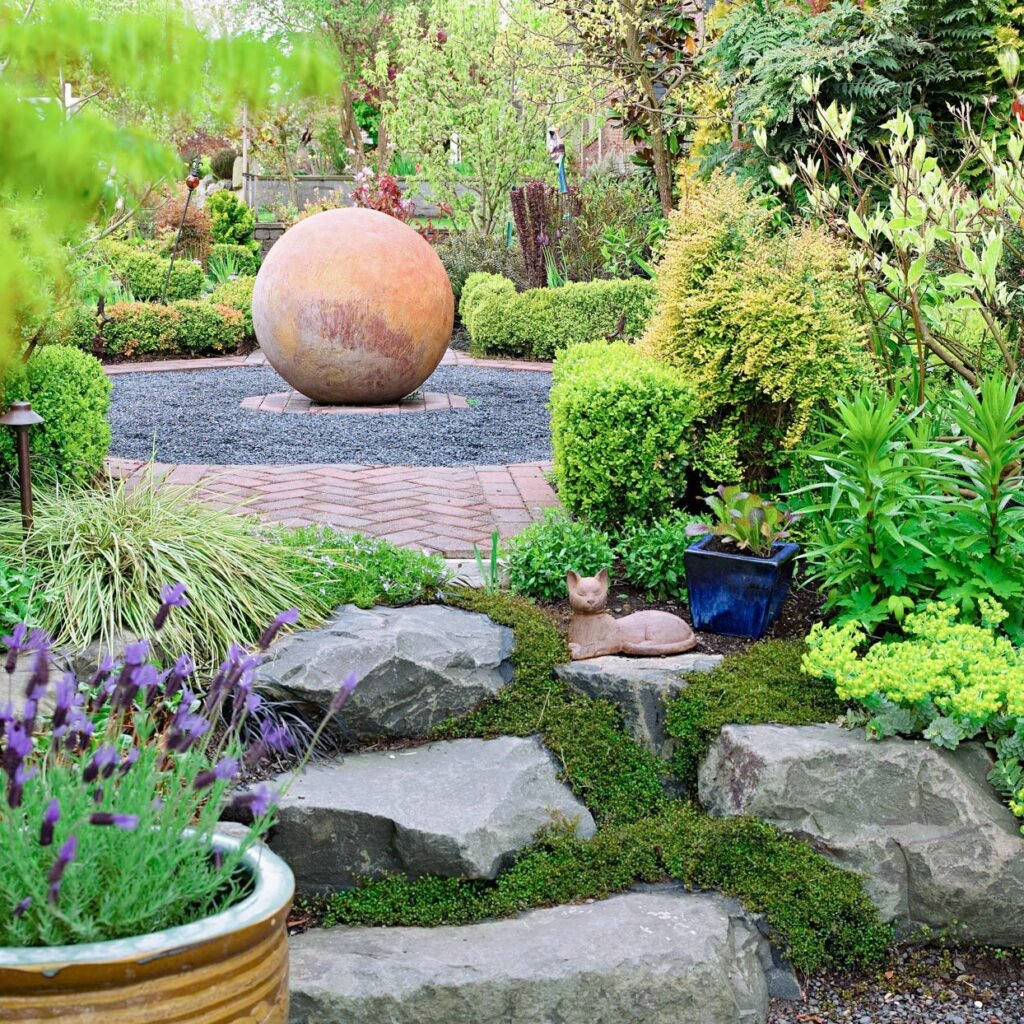
Water-wise gardens often use hardscape elements to complement plants while conserving water.
- Gravel and stone pathways: These reduce watering needs while adding texture and contrast.
- Rain gardens or swales: Designed to capture and direct rainwater into planting beds, these features maximize natural irrigation.
- Decorative containers: Use pots of succulents or herbs to add color accents without large water requirements.
- Shade structures: Pergolas, trellises, and arbors reduce evaporation in planted areas while adding architectural beauty.
Pro tip: Choose permeable materials like gravel, pavers with gaps, or decomposed granite instead of solid concrete to encourage rainwater infiltration.
Step 6: Establish Efficient Watering Practices
Even drought-tolerant gardens need some water, especially during establishment. Efficient watering ensures plants survive and thrive.
- Deep, infrequent watering: Watering deeply encourages roots to grow down, making plants more drought-resistant.
- Drip irrigation or soaker hoses: These systems deliver water directly to roots, minimizing evaporation.
- Water early in the day: This reduces water loss and gives plants time to dry before evening, preventing disease.
- Harvest rainwater: Install rain barrels to collect roof runoff and use it to water your garden.
Pro tip: Most drought-tolerant plants only need supplemental watering for the first one to two years. After that, they usually thrive on natural rainfall.
Step 7: Maintain for Long-Term Success
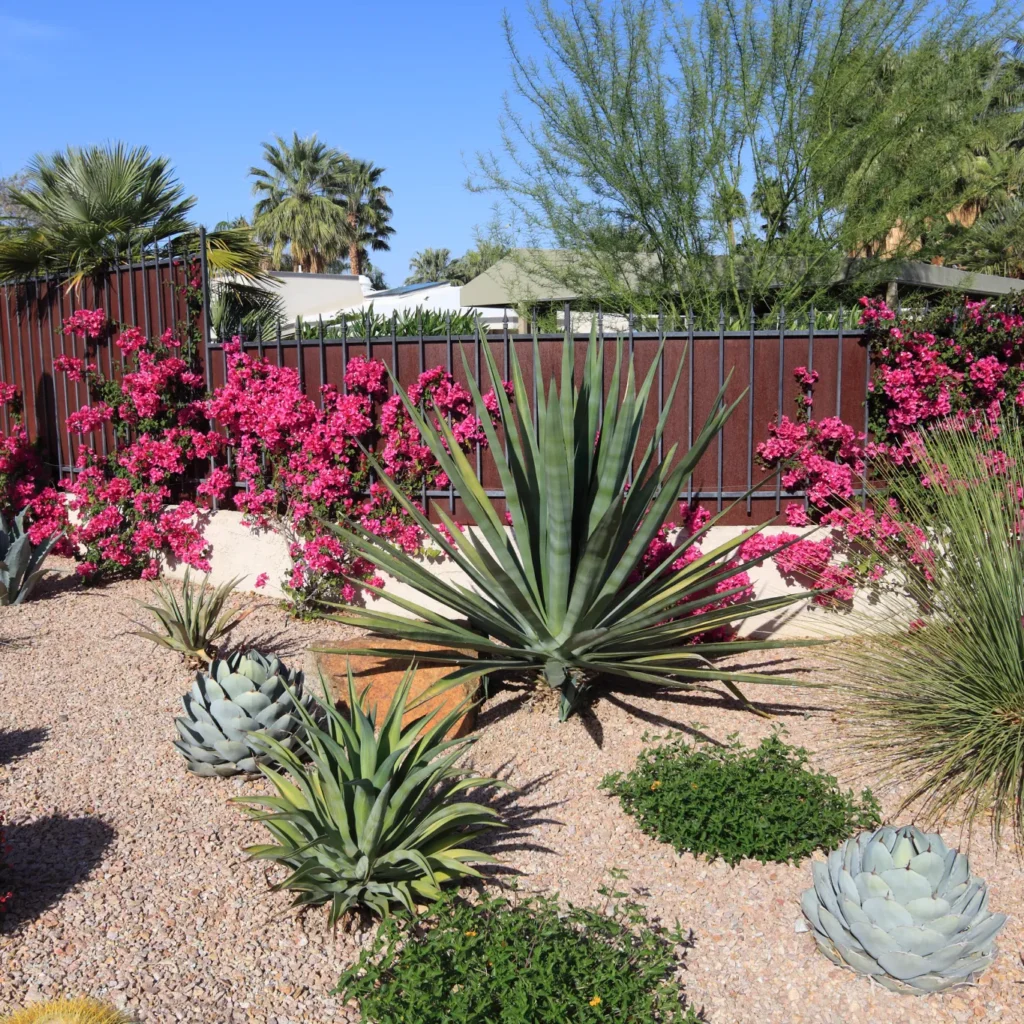
A drought-tolerant garden isn’t completely maintenance-free, but it requires far less effort than traditional gardens.
- Weed control: Stay on top of weeds early in spring, since they compete for water.
- Refresh mulch annually: Top up mulch each spring or fall to maintain water retention.
- Prune strategically: Light pruning of shrubs and grasses keeps them looking tidy while reducing competition for water.
- Replace thirsty plants: Over time, swap out plants that struggle in drought for better-suited species.
Common Mistakes to Avoid
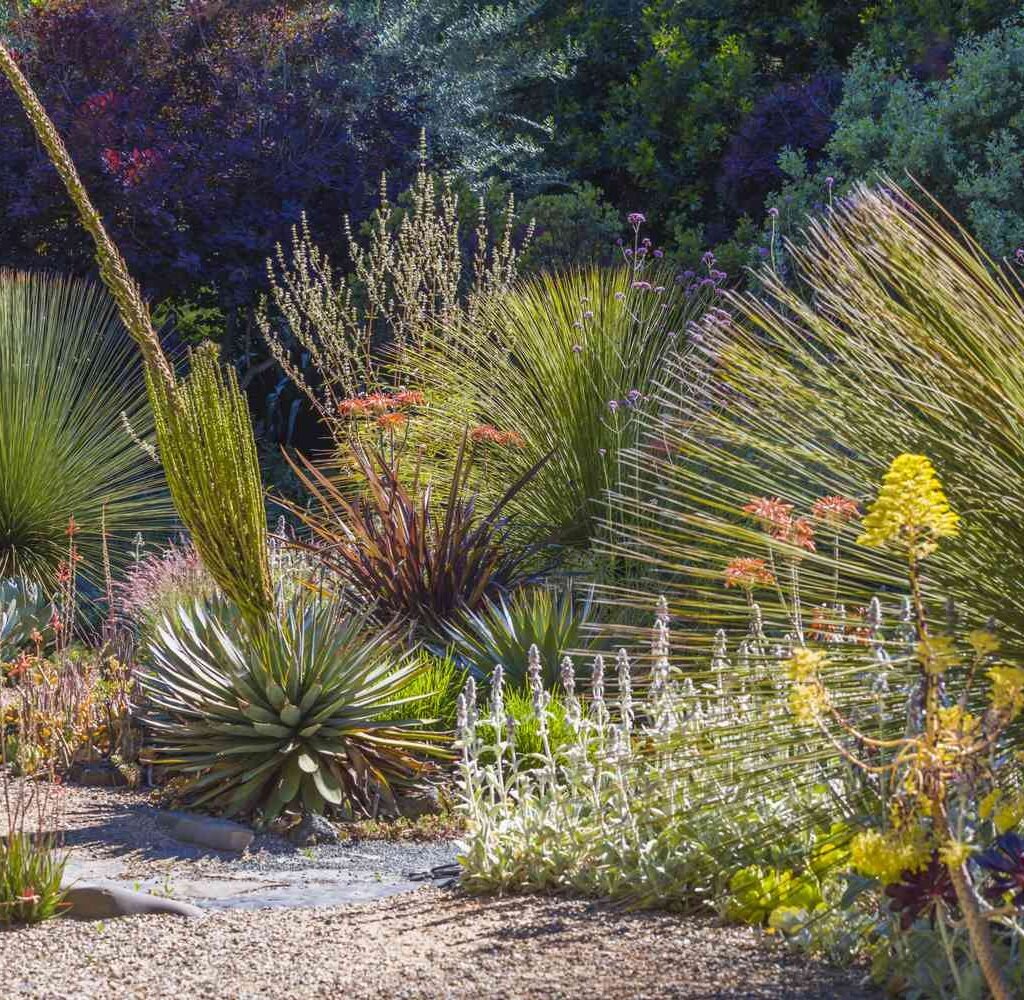
- Overcrowding plants: Even drought-tolerant plants need airflow. Too much crowding leads to stress and disease.
- Watering too frequently: This weakens roots and makes plants more dependent.
- Ignoring establishment: Even drought-tolerant species need regular watering during their first season.
- Relying only on succulents: While beautiful, too many succulents can look sparse—balance them with grasses, shrubs, and perennials for a lush look.
Final Thoughts
Designing a drought-tolerant garden doesn’t mean giving up on beauty or abundance. By preparing soil, choosing resilient plants, layering textures, and using efficient watering methods, you can create a landscape that looks lush and vibrant while conserving water.
Think of your drought-tolerant garden as a long-term investment: it saves time, reduces water bills, supports pollinators, and remains stunning even during dry spells. With the right design, you can have both resilience and richness—proof that water-wise gardening and lush beauty go hand in hand.
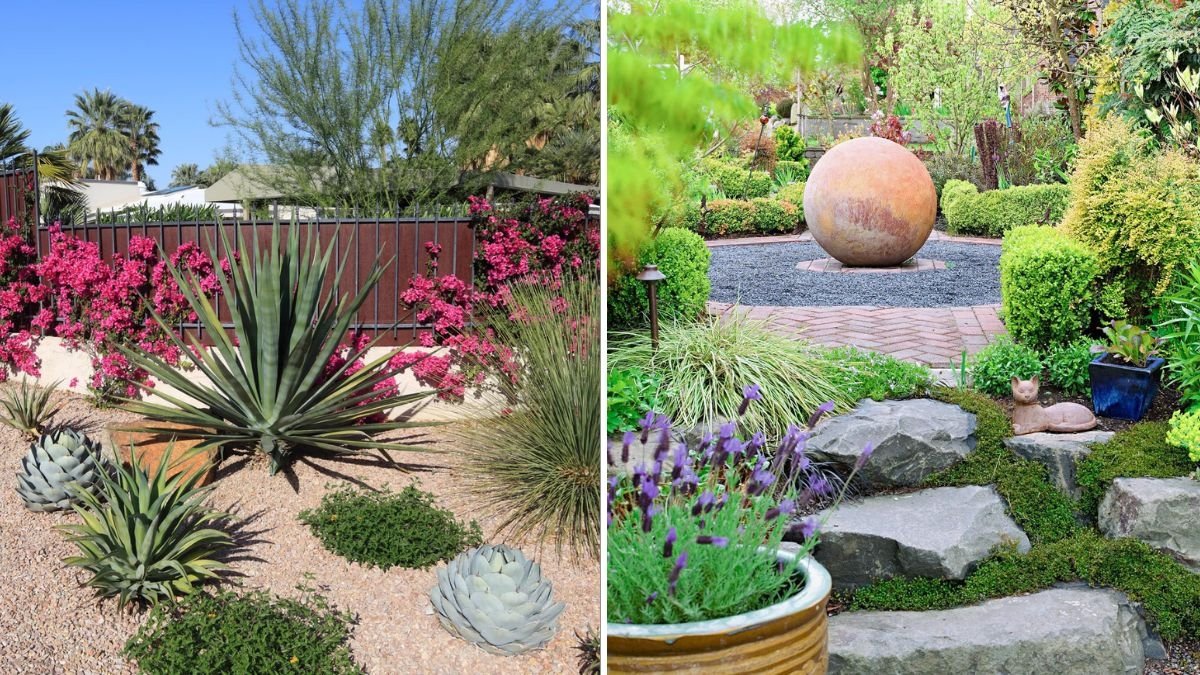





Leave A Comment